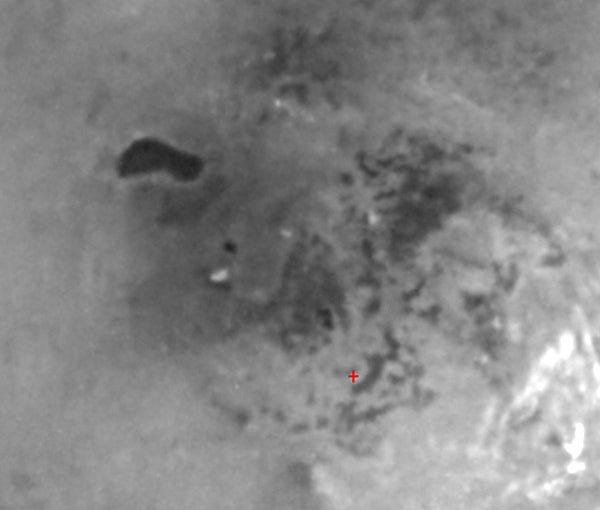A dark spot on Titan with a footprint shape and a smooth, beach-like outline may be a methane lake, say Cassini mission scientists. Located close to the moon’s southern pole, the feature, which is the size of Lake Ontario, lies in the cloudiest region of Titan, where churning storms are common and hydrocarbon rains are possible.
Cassini has imaged other dark features on Titan, but this is the first with a smooth outline suggesting a shoreline. The others have displayed angular or diffuse edges.
Scientists caution the dark filling might not be liquid. Says imaging team leader Carolyn Porco of the Space Science Institute in Boulder, Colorado, “It’s plausible the ‘lake’ is simply a broad depression filled with dark, solid hydrocarbons falling from the atmosphere.” In this case, the smooth outline would result from some geological activity, such as the collapse of a sinkhole or a volcanic caldera.
Although it is summertime for the southern hemisphere of Titan, temperatures are around 300° F below zero (90 kelvins), a chilly realm where methane fills many of the climate roles that water fills on Earth. For example, on Titan, methane can exist as a solid, a liquid, or a gas, much as water does here. Thus, say scientists, Titan landscapes may be shaped by methane rain falling from methane clouds, and hills and ridges of solid methane may be eroded by methane streams.
Since Cassini’s arrival, planetary scientists have been searching Titan in vain for the open bodies — seas or lakes — of liquid hydrocarbons that theory predicts. Further encounters with the moon should help determine the newly discovered feature’s nature, and perhaps its origin.










